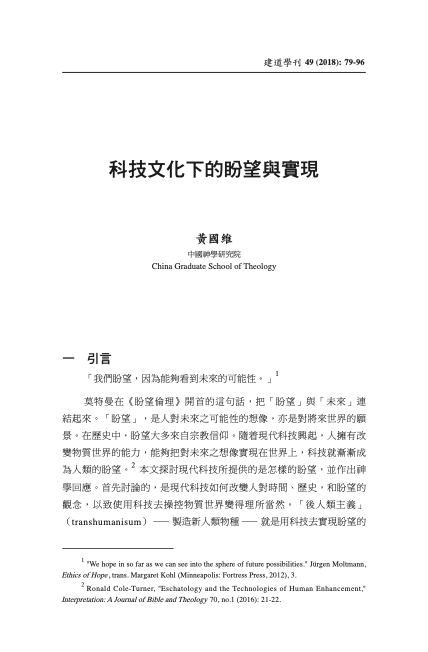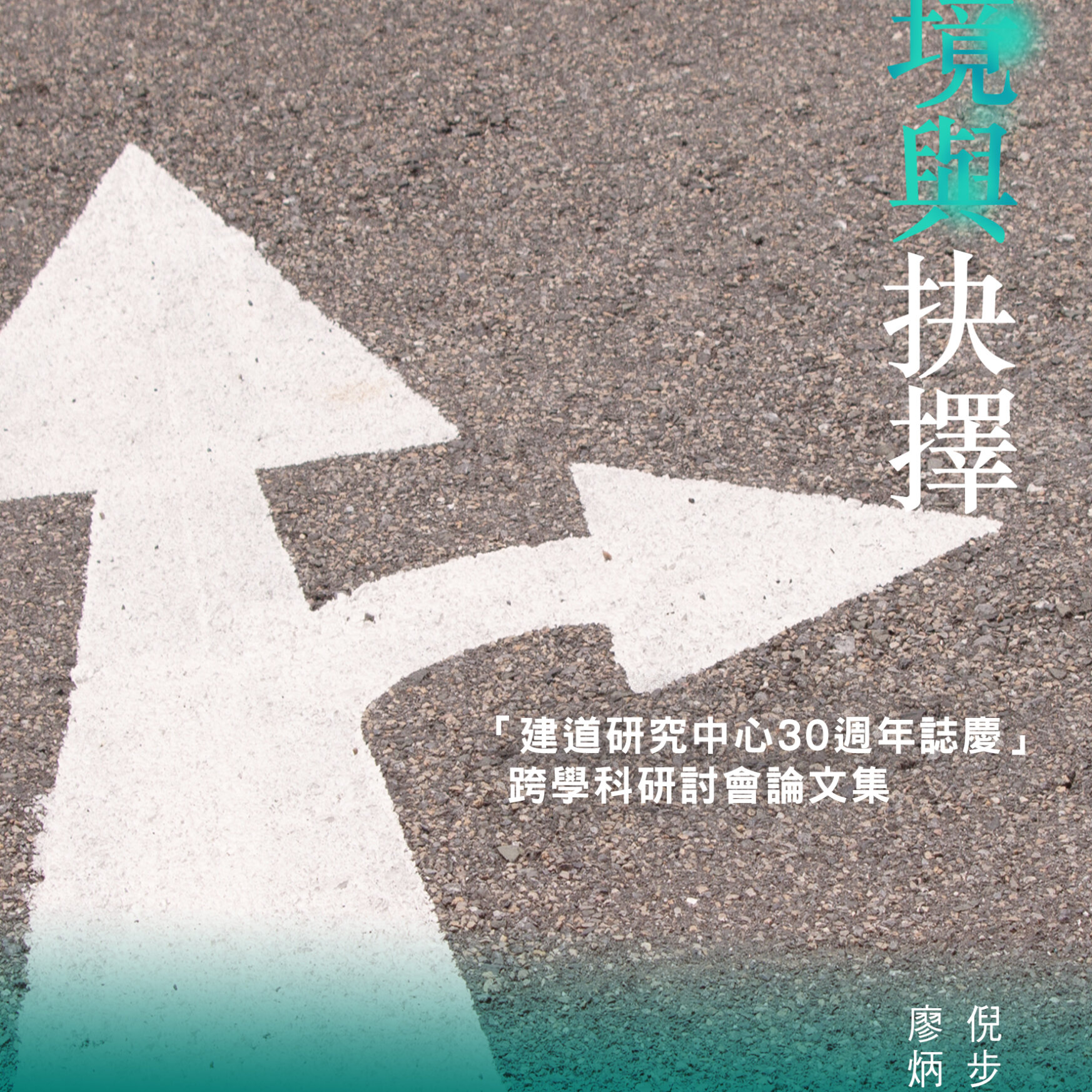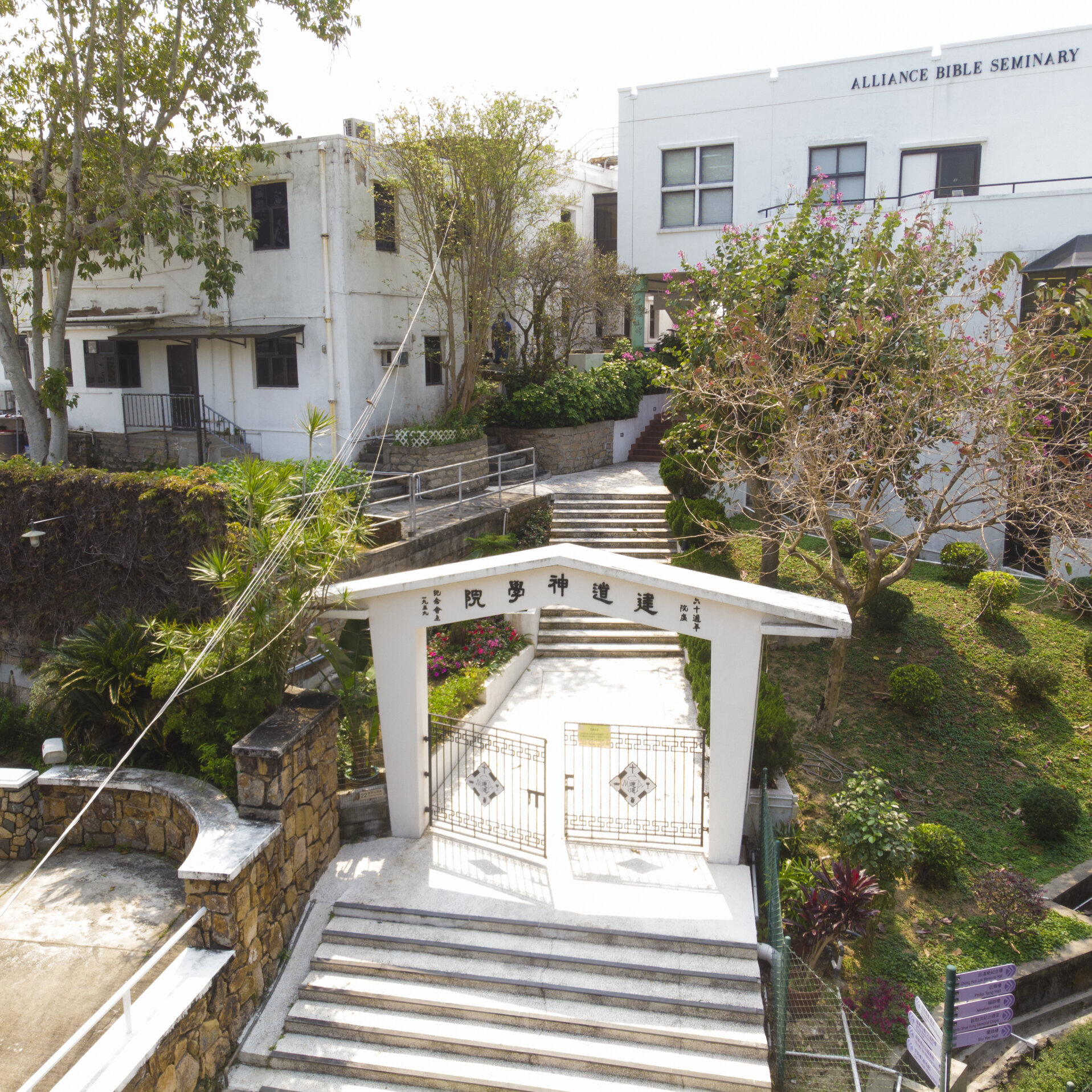科技文化下的盼望與實現/黃國維
黃國維
撮要
自啟蒙以降,科技漸漸取代信仰成為人類的盼望,「後人類主義」 (transhumanism)的支持者盼望科技最終能夠令人不死,就完全把盼望放在科技之上。雖然「後人類主義」並不普及,但背後那突破物質限制,提升身體功能的敘述卻深深影響現代人,令人以為科技是最好的解決問題方法,便忽略了關注更加重要的問題。文章透過整容手術和人工耳蝸兩個例子,說明科技的限制,和指出在科技以外可以有更好的方法去面對身體的缺陷。基督的十架、復活、和升天亦提供了神學框架去回應現代科技發展,指出人類雖然不應忽視科技的貢獻,盼望卻要建立在基督和教會之上。
ABSTRACT
Since the Enlightenment, modern technology has been replacing religious faith as the source of hope. Advocates of transhumanism believe that technological advancements will ultimately allow humans beings to attain immortality, thereby placing hope entirely on technology. What underlies transhumanism is a desire to overcome all material limitations and enhance bodily function. Although transhumanism is still not a popular belief, its underlying desire shapes our thinking, leading us to believe that technology always offers the best solution and diverting our attention from addressing the more important questions. The cases of aesthetic surgery and artificial cochlea are examined to demonstrate the limitations of technology and that there are better alternatives to technology in addressing bodily disabilities. The cross, resurrection, and exaltation of Christ offers a theological critique against modern technology: while benefits of modern technology should not be ignored, Christ and the Church should always be the source of our hope.
原載於《建道學刊》49期(2018年1月),頁 53-78。
最新文章
新手牧者研究計劃(三):新手牧者的身心靈狀態 / 盧慧儀
2025 年 11 月 19 日
個體與關係:滕近輝思想中「深化」的靈性觀 / 倪步曉
2025 年 11 月 18 日
香港九龍塘基督教中華宣道會之起源和發展史/陳智衡
2025 年 10 月 20 日
编辑精选
[電子書]困境與抉擇:「建道研究中心30週年誌慶」跨學科研討會論文集/廖炳堂、倪步曉主編
2025 年 1 月 2 日
從梧州到長洲:建道神學院125年的挑戰與恩典 / 陳智衡
2023 年 10 月 1 日
微小教會的見證/高銘謙
2023 年 6 月 1 日







